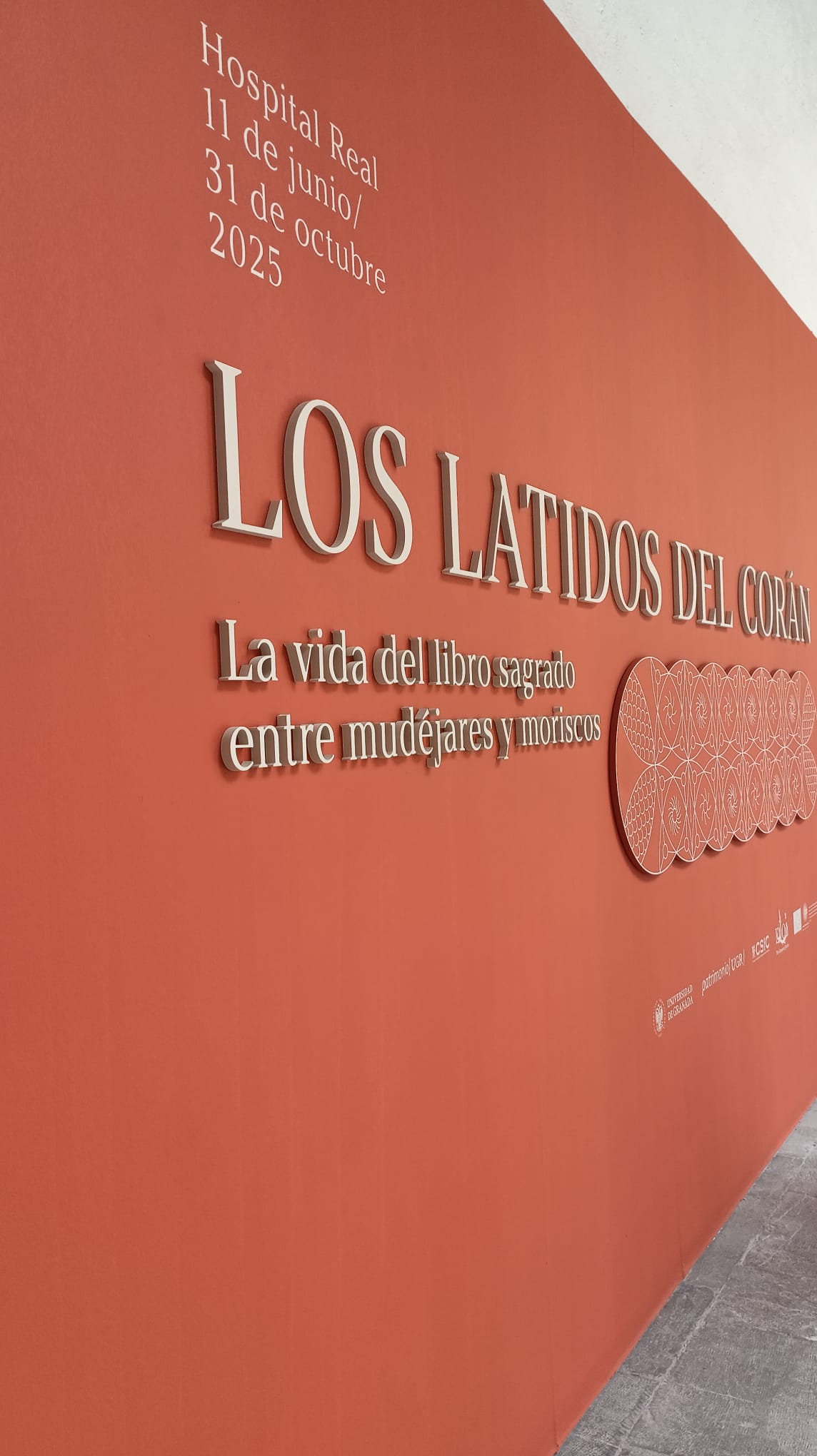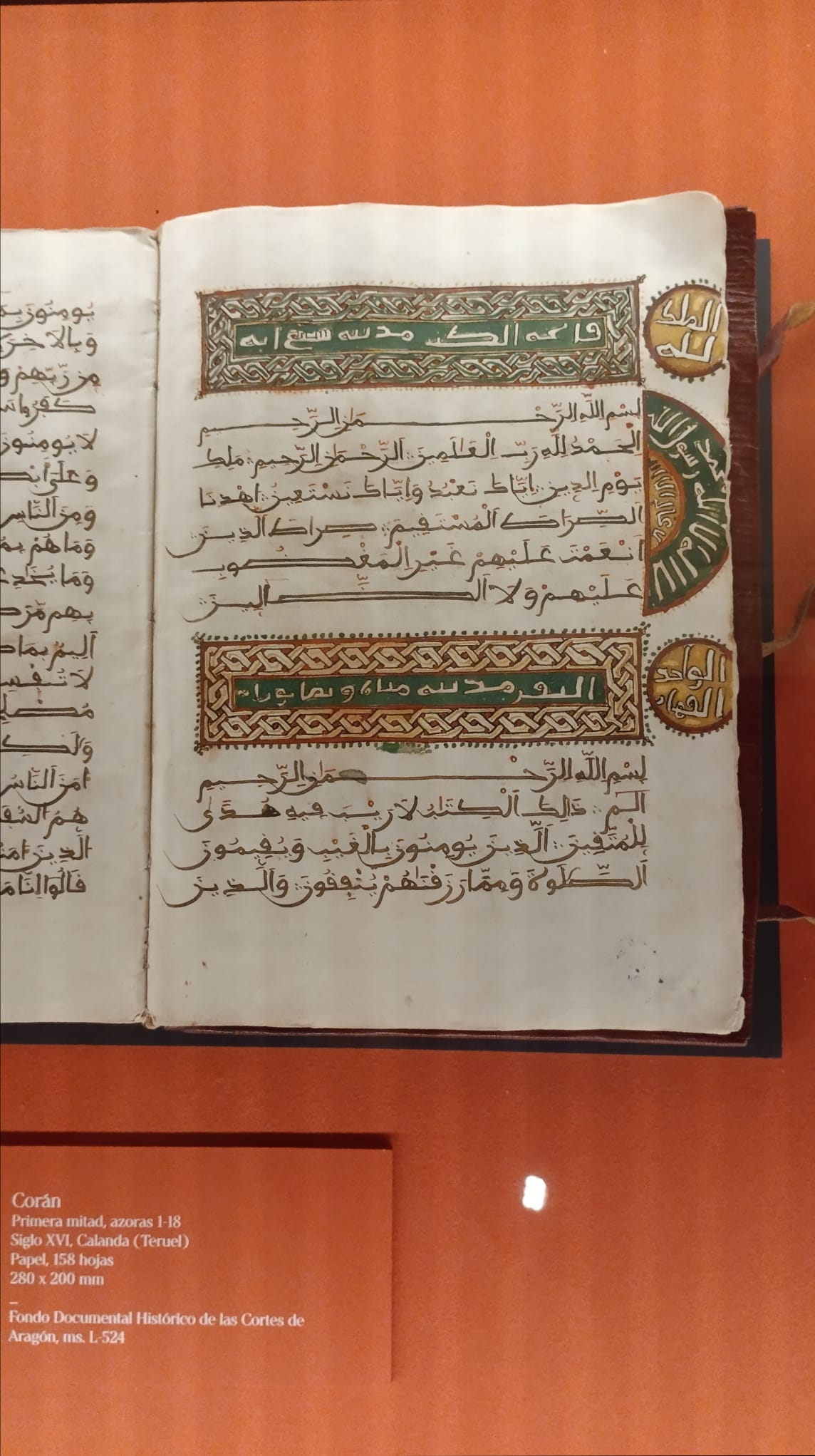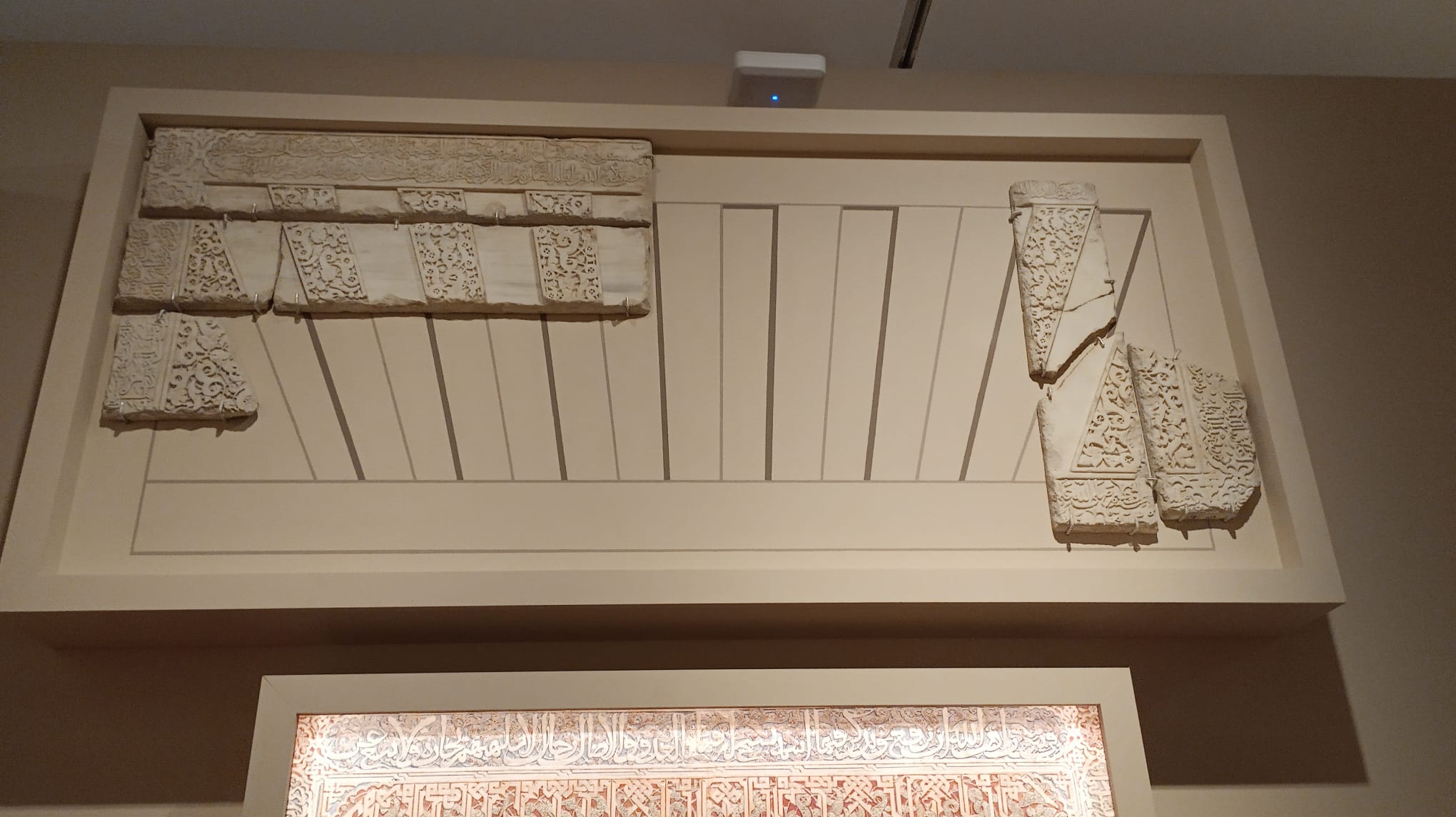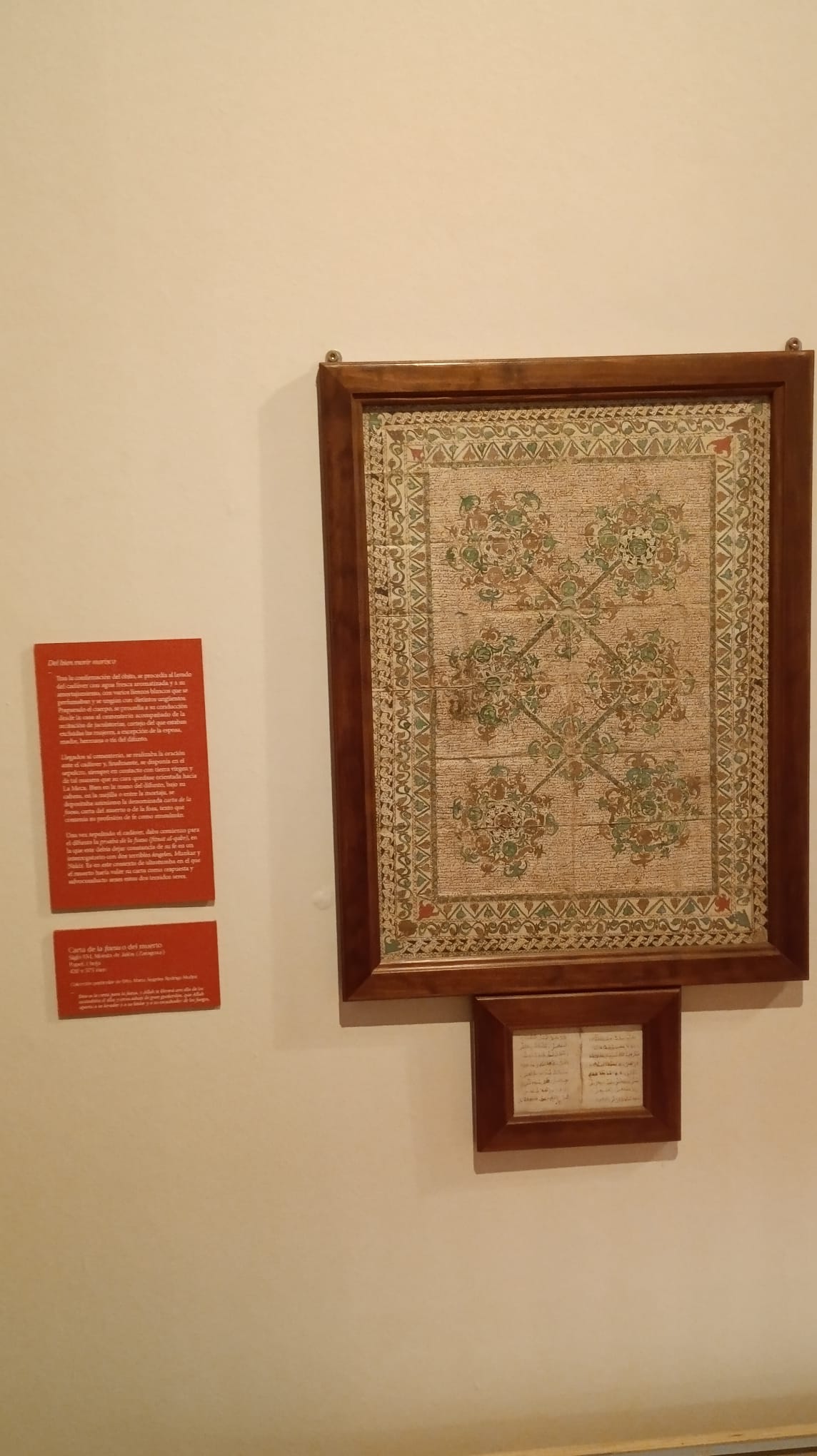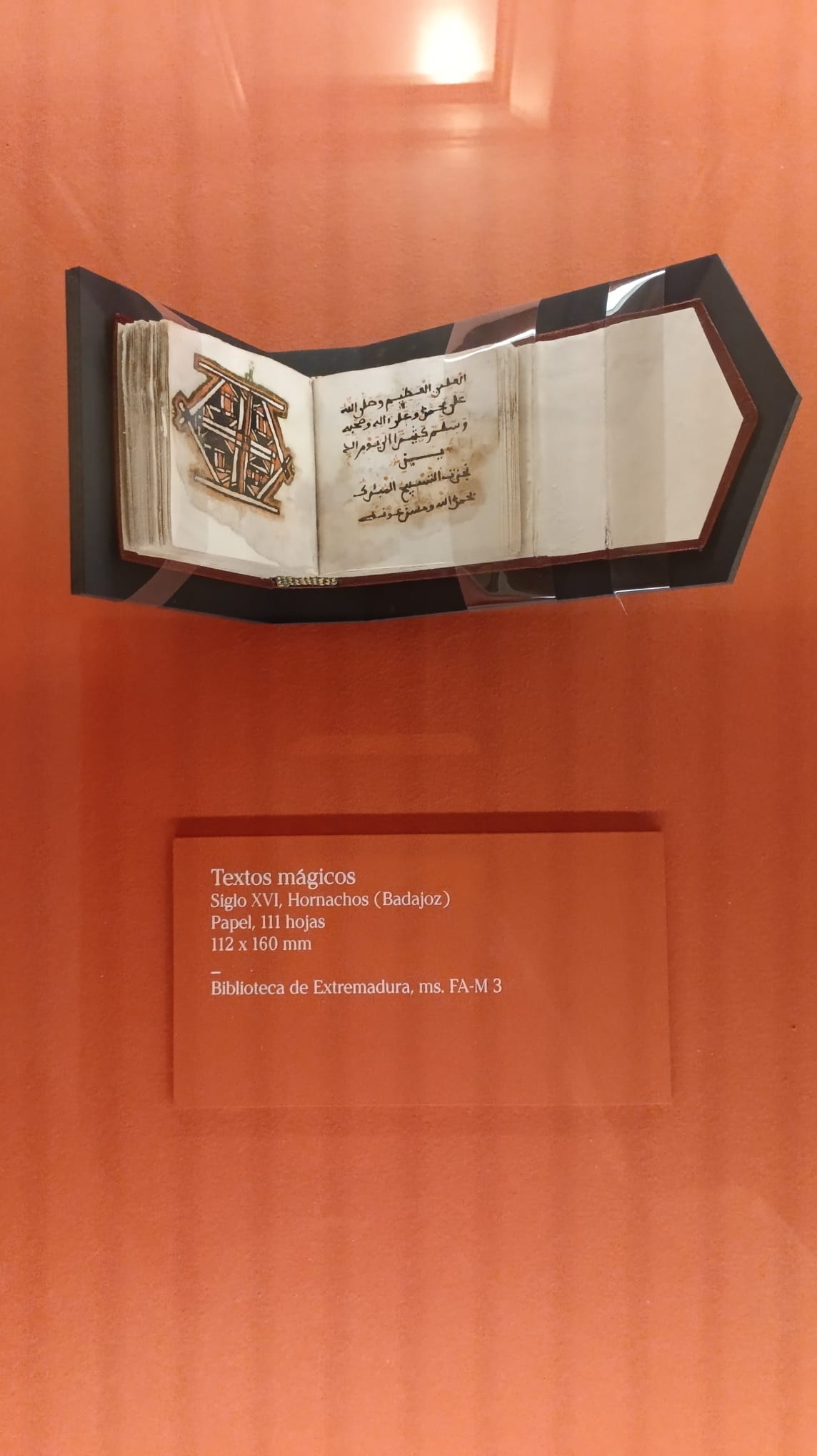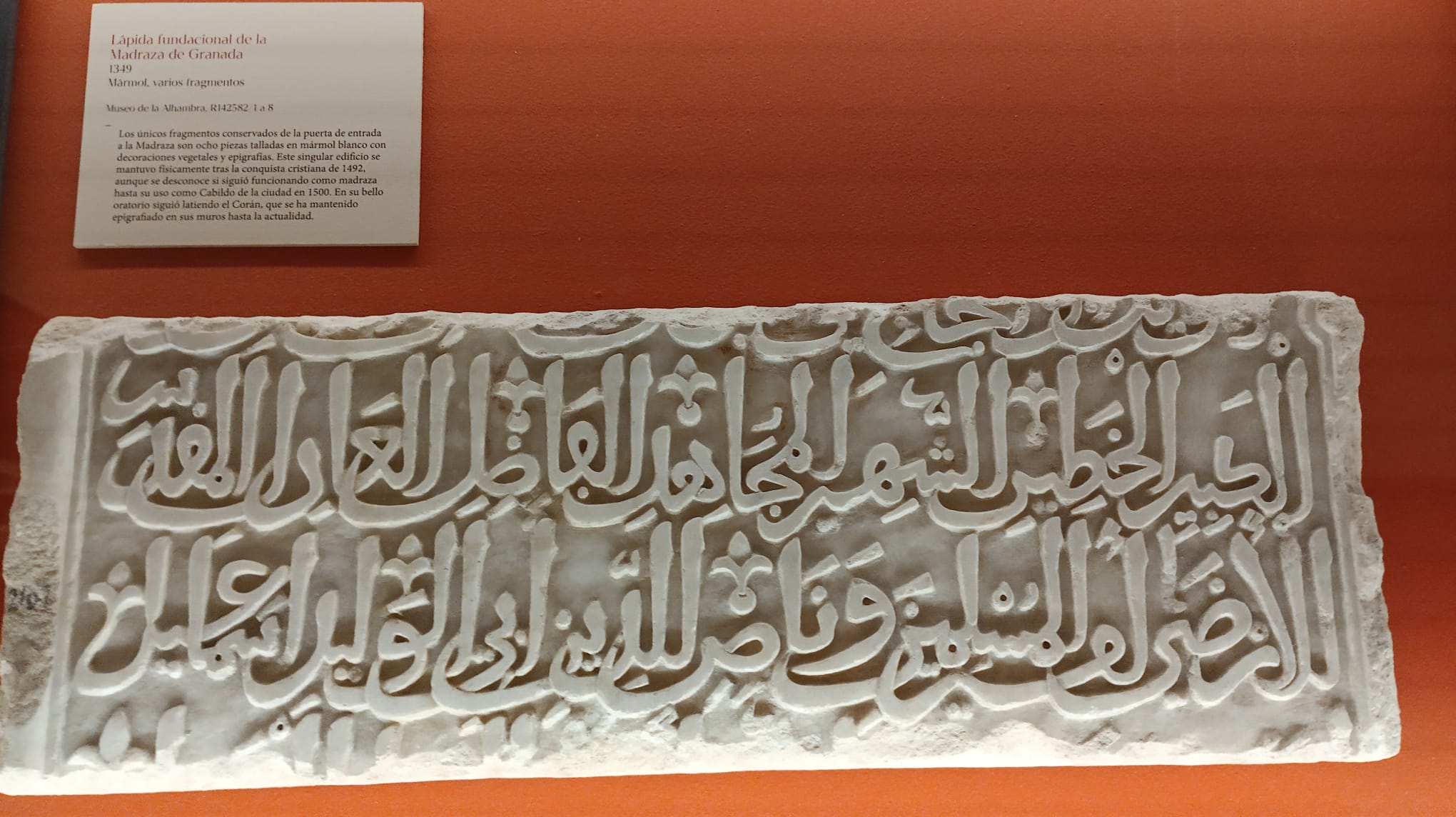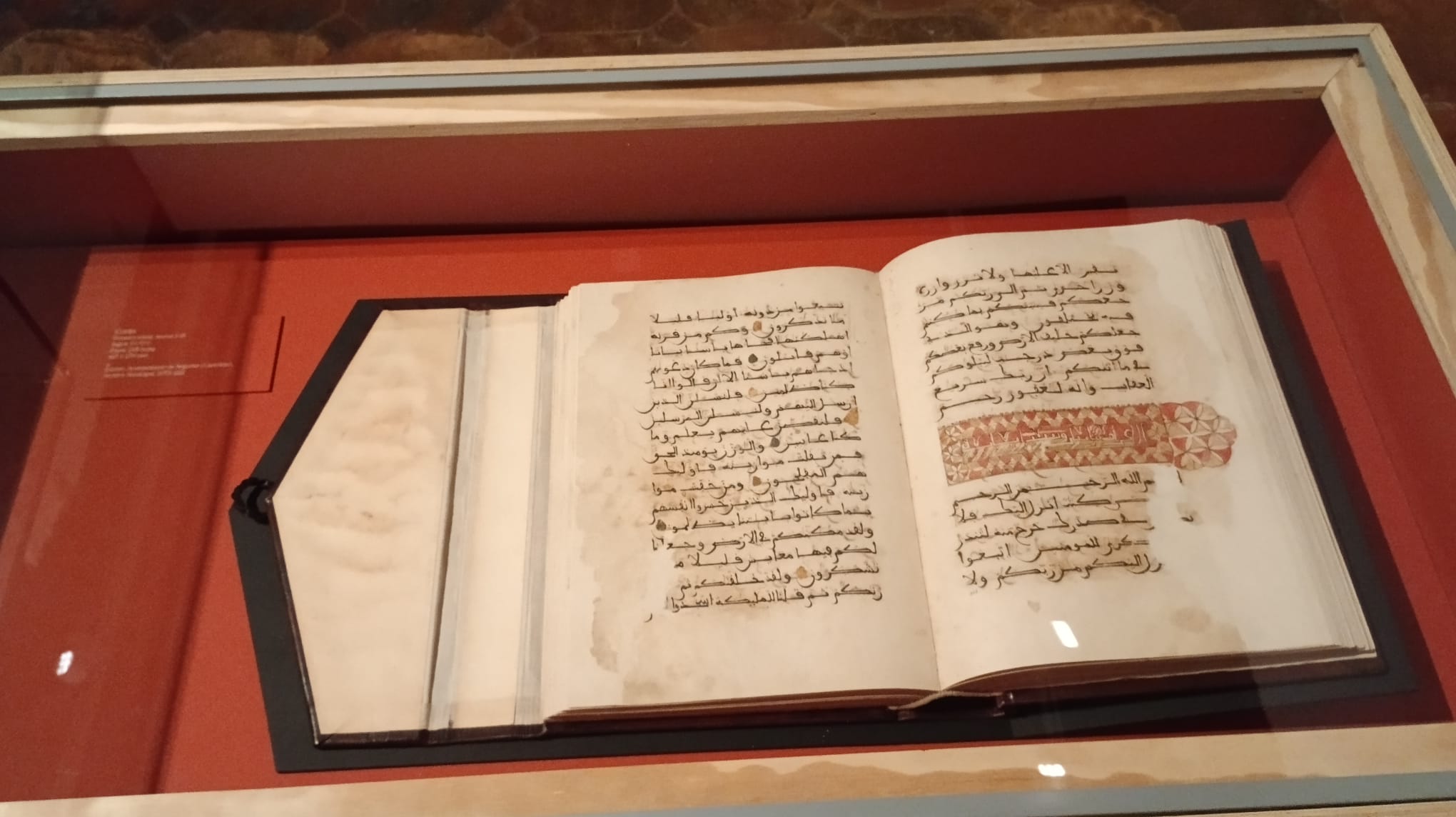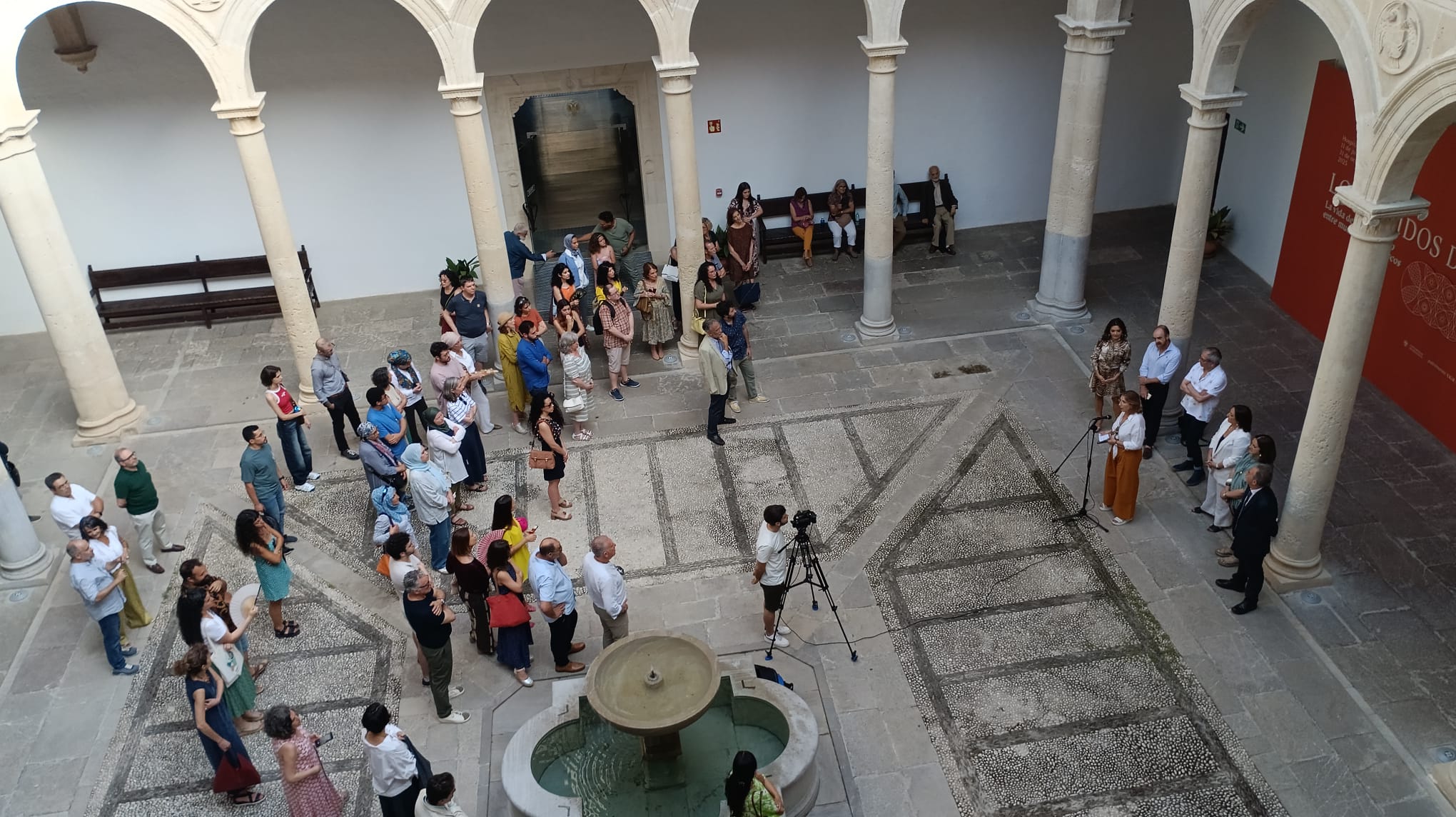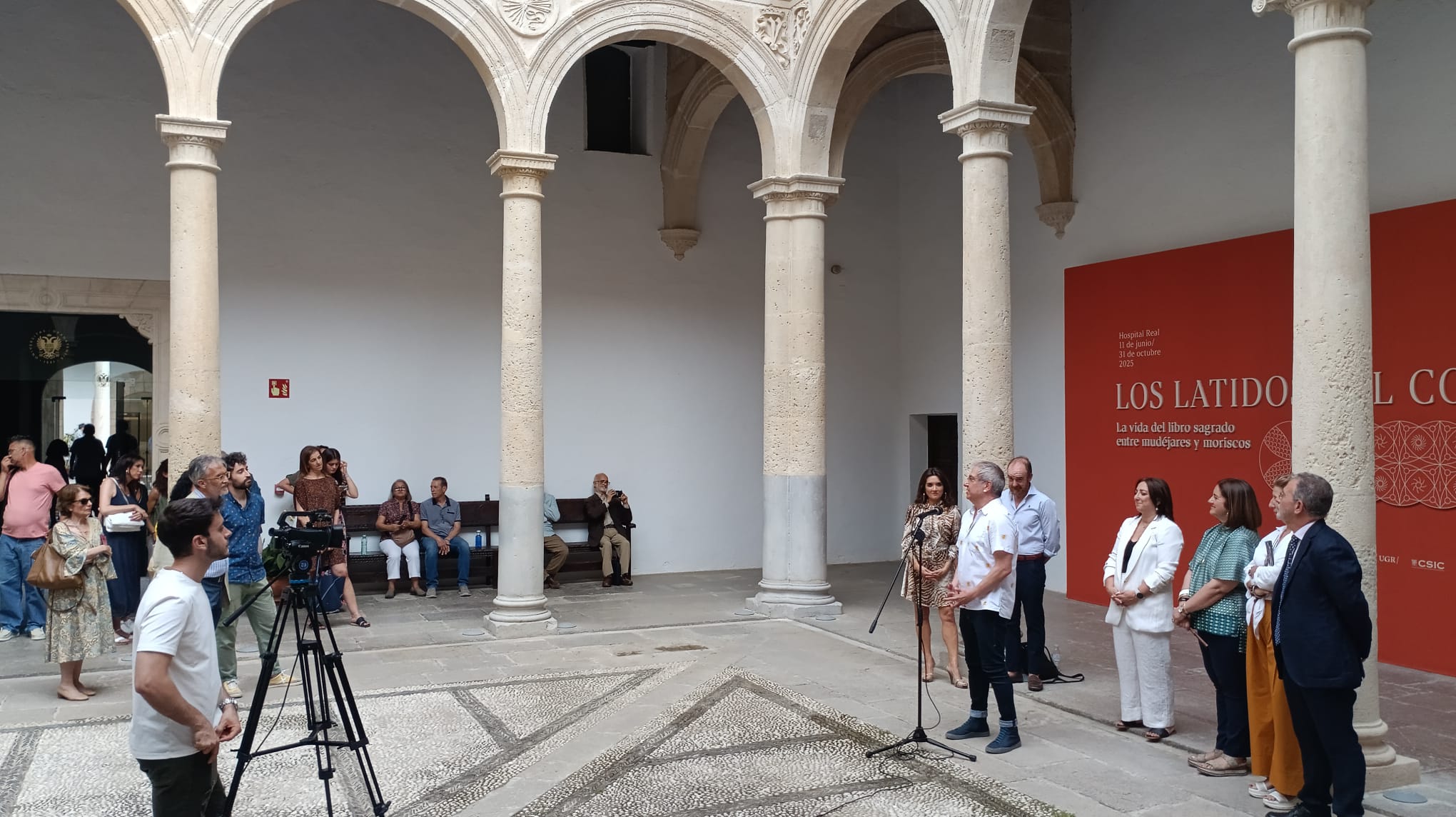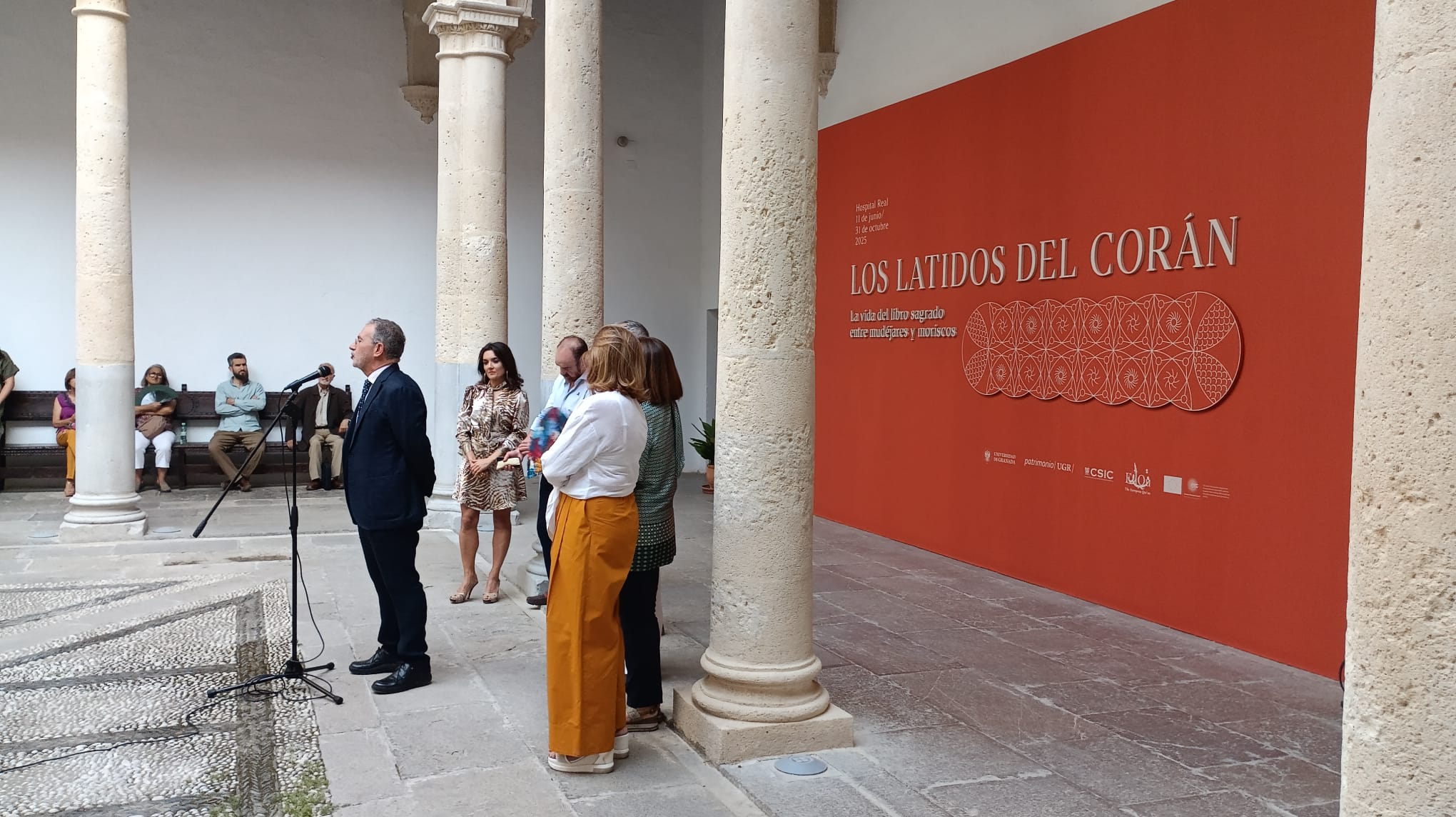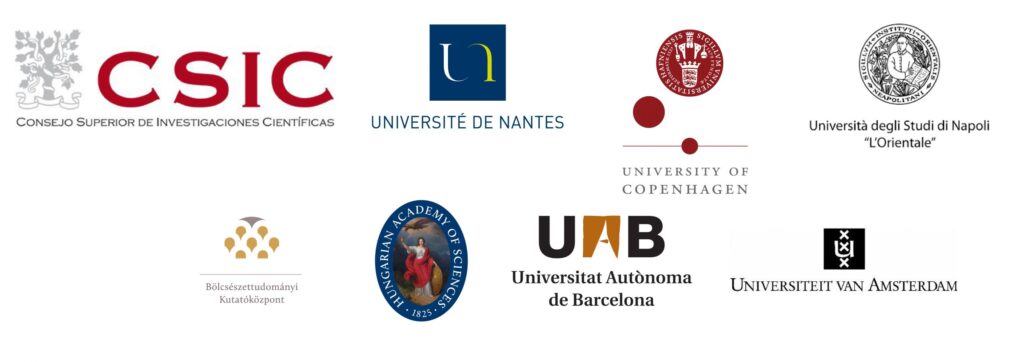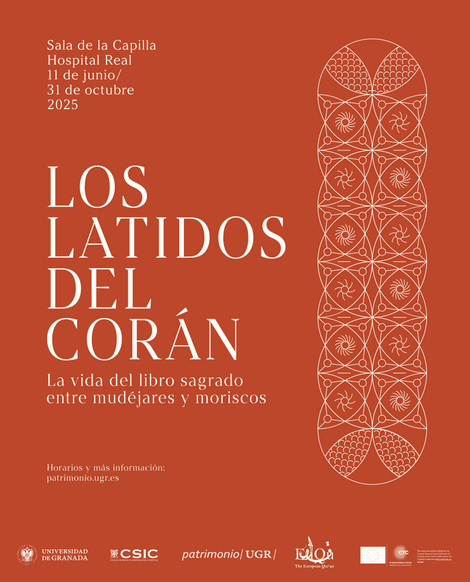
This exhibition is dedicated to the ‘life cycle’ of the Qur’an among the Islamic minorities of the Iberian Peninsula, Mudejars and Moriscos. With an informative approach and the aim of recovering and giving value to a cultural legacy that is often forgotten, it is aimed at the general public and is organised into eight thematic areas that cover the process of copying and textual composition, including translation, learning, the ritual contexts of use, transmission and circulation, and the concealment in the walls of Moorish houses before the expulsion and the discoveries in later centuries.
The exhibition is the result of a partnership between the University of Granada and the Consejo Superior de Investigaciones Científicas (CSIC) in the framework of the joint actions carried out by the Unidad Asociada de I+D+I Patrimonio Cultural Árabe e Islámico (Associated Unit for R+D+I Arab and Islamic Cultural Heritage), and disseminates part of the results of three research projects that focus on how the sacred text of Islam forms part of the intellectual, religious and cultural history of medieval and modern Europe, with the Iberian Peninsula being one of the privileged places for its analysis.
Some news about the Exhibition:
https://www.instagram.com/p/DLsbYQpoSfx/?igsh=cXNhaXk4ZjE4ZXkz
https://www.instagram.com/p/DLklI6rIvkm/?igsh=Z3JsaW90ZGgwamw5
https://www.instagram.com/reel/DKym7XipjKe/?igsh=MXFnOXNjYWpxaW95bw==
https://www.granadahoy.com/granada/manuscrito-coranico-moriscos-granada_0_2004122011.html
https://canal.ugr.es/noticia/presentada-la-exposicion-los-latidos-del-coran/
https://share.google/G9FxpGvd330tNdyHk
https://mailchi.mp/factumfoundation.org/factum-foundation-june-2025



